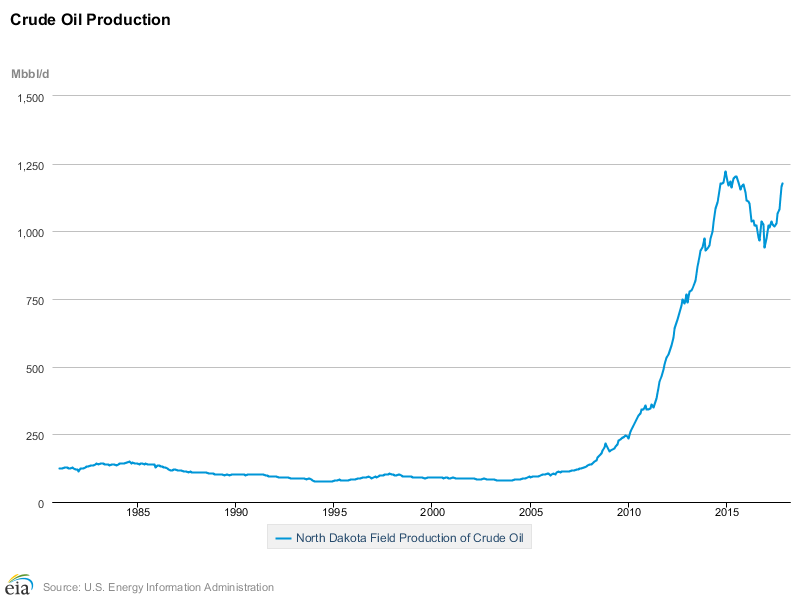Production down slightly as winter chills activity
The North Dakota Industrial Commission has released its latest Oil and Gas Production Report, outlining hydrocarbon activity in the state for December 2017.
Production was down slightly across the board, as the North Dakota winter slowed operations. Operators produced a total of 1,181 MBOPD in December, compared to 1,197 MBOPD in November. Despite this month’s drop, overall production is approaching the all-time high of 1,227 MBOPD set in December 2014.
Gas production also decreased somewhat, falling from 2,096 MMcf/d to 2,082 MMcf/d. This is still extremely close to the all-time high gas production, which was set in November.
The number of producing wells also fell from the all-time highs set in November. There are now 14,293 operating wells in the state, compared to 14,338 in November.
Winter weather may have slowed operations this week, contributing to the slight downturn in production. The state had 11 days with wind speeds above 35 mph, which is too high for completion work, and seven days with temperatures below -10 F.
Significant increase in rig activity planned
Operations in the Bakken have responded to the increase in oil price, with rigs gradually coming online. The NDIC reports operators plan to add 5-10 rigs in Q2 and Q3 of 2018, depending on workforce and infrastructure constraints. This would represent a significant increase for North Dakota, since the current rig count in the state is 57. Current trends suggest the state will soon reach all-time high production records.
The NDIC reports that completions outpaced drilling in December, with the number of wells waiting on completion falling by six to 877. The number of inactive wells also dropped, falling 23 to end the month at 1,469.
Gas capture in North Dakota is increasing, and the percentage of gas flared dropped to 13%. The gas gathering expansion near Lake Sakakawea is now starting up, and the gas and gas liquids lines began operations in January. Next month, therefore, will see the first effects of this new system, with a likely increase in gas capture rates.


